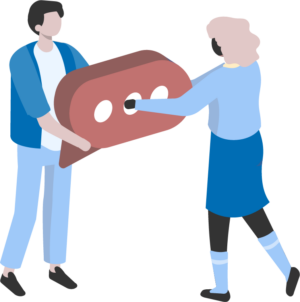Presenting your research effectively and with confidence
Advice from winners of the Vitae Three Minute Thesis® competition


However much experience you have of public speaking, we can all continue to improve by learning from others. That’s why we we’ve collected some of the best presentation advice from previous winners of the Vitae Three Minute Thesis® competition. They’ve each had to explain their work under the pressure of a strict time limit and in front of hundreds of people, so they know what they’re talking about.
Your abstract has been accepted for an upcoming academic conference or perhaps you’ve been asked to present your research at an in-house event. Does that thought provoke a sinking feeling in the pit of your stomach or fill you with excitement?
Today it’s essential for all researchers to be able to deliver effective and confident presentations about their work, to various audiences.

Seize the opportunity
Firstly, don’t let nerves or other priorities stop you from accepting speaking invitations.
“I remember the first time I presented in my first year at university, I was so nervous my legs wouldn’t stop shaking. Being scared of public speaking is normal – you become the center of attention and don’t want to look foolish, but you shouldn’t let this stop you. This moment is special, and you will rarely get the opportunity to talk about something you care or are passionate about with people listening intently. It’s an opportunity to get people thinking in your mindset which can have huge impact on others work, especially if they are from different disciplines and wouldn’t normally see your work.” – Thomas Fudge, 3MT Judges’ Choice Winner 2017

“You should throw yourself at any opportunity to present – every time you do it you’ll learn something new and improve. It can be intimidating to begin with, but eventually you’ll be more at ease and appreciate your work and the opportunity to share it.” – Euan Doidge, 3MT People’s Choice Winner 2017
“And honestly, your nerves will stop jangling after the first time you do it.” – Owen Gwydion James, 3MT Judges’ Choice Winner 2018
Post information
Related posts
Engage the audience with a real-world example they can relate to

Whether you’re speaking to fellow academics or members of the public, an accessible example is a great way to get your audience’s attention. This hook should help them understand why your research is relevant to them, and will make your talk more memorable.
“Coming up with a hook is helpful; a nice analogy that your audience can relate to.” – Owen Gwydion James
“Once you get their attention, you can start to go into more depth, but you need to relate to experiences or scenarios that the audience can understand as non-experts in the field. This can be one of the biggest challenges when communicating research – we need to excite people (including future researchers), and involve them at a level that taps into their imagination.” – Thomas Fudge

“I created a list of the most important aspects of my research and based on that came up with an analogy that is common to most people.” – Nazira Albargothy, 3MT Judges’ Choice Winner 2016
Remember the bigger picture
Your presentation will usually need to include some details about methodology or results but don’t forget to set these in context.
“The biggest challenge is in un-learning a lot of what has become second nature, and putting it back together for someone with no training in this area at all. Many times, I think, we probably even struggle to articulate to ourselves what our research is actually about.
It is easy to get caught up in complex, abstract theories or infinitesimal details of our data. We can then start to lose the bigger picture of what we’re actually doing and why.” – Jamie Khoo, 3MT People’s Choice Winner 2018


“When presenting your research, I think it’s useful to remember that you don’t have to talk about absolutely everything you’ve done or discovered. It’s sometimes better to talk about less material that has a better story. Try to identify the take-home message, and make sure the story gets to that point.” – Euan Doidge
Tell a story

Our brains process and store information in the form of stories. Stories captivate us and help us to understand information. Therefore, to produce an engaging and memorable presentation, you want to immerse your audience in your story.

“I ensured that my three minute presentation was composed of a story that captivated the listener by taking them on a journey through my research, first introducing them to the background of the disease, raising the research question in the middle, and then using an analogy in different parts of the presentation to deliver the research idea. I also utilized the slide by adding details to it that I wouldn’t have time to discuss and to give a visual representation of my analogy.” – Nazira Albargothy
Practice, practice, practice
“I tweaked the presentation to make it more appealing and relevant to an audience of all ages and backgrounds, testing it out on friends, family, and acquaintances. I practiced the talk in a variety of different settings, which made me feel more comfortable presenting in any type of environment.” – Maddie Long, 3MT People’s Choice Winner 2016
“Unfortunately, practice really does make perfect and I feel pretty bad for my girlfriend. She helped me a lot and after the number of times I went over it at home; her party trick is now performing my 3MT® word for word! But all this work meant that I grew in confidence each time I did it. I ended up really enjoying each presentation.” – Owen Gwydion James


Preparation prior to the event is crucial and I practiced the three minute talk at least 50 times before the final, and took feedback from friends and family. – Zaid Janjua, 3MT People’s Choice Winner 2015
Have fun

Finally, don’t forget that this is an opportunity to share something you’re passionate about with others. If you set out to enjoy the experience, then that will be infectious.

“Let your enthusiasm for the subject reflect in the way you present. Remember that the audience wants to be engaged and your enthusiasm for the topic will make for a captivating presentation.” – Maddie Long
Watch: top tips for research communication
Where to next?
If you’ve found these tips helpful make sure you look at:
Academic conference tips – Tips to get the most out of your next conference.
Our Insights newsletter – the latest news, tips, and resources delivered straight to your inbox.